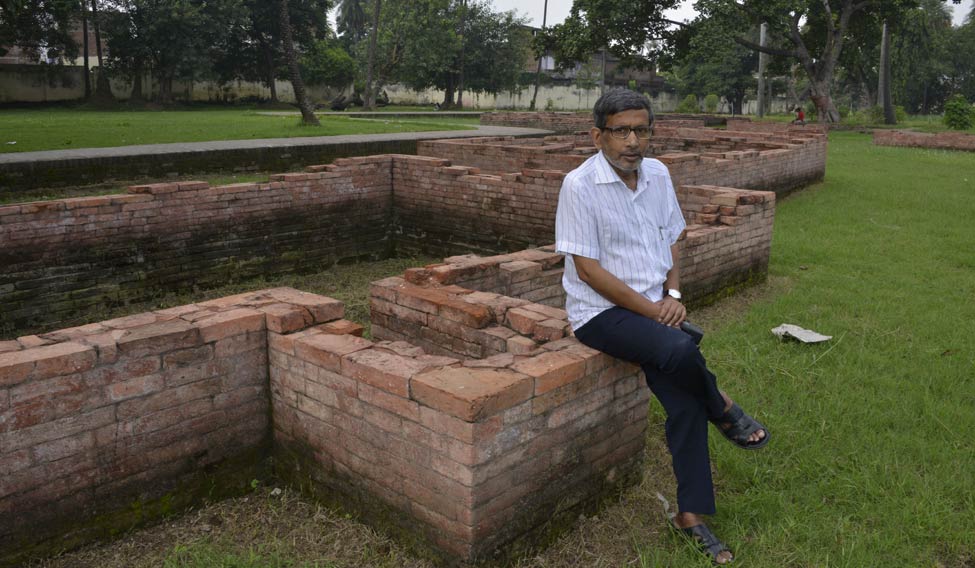On the walls of Patna’s Galaxy Bar, there is a sculpture of a big fish chasing smaller ones, something that happens in politics as well. Sitting next to it, raucous patrons discuss politics, their conversation dominated by the verbal slugfest between Chief Minister Nitish Kumar and BJP’s prime ministerial candidate Narendra Modi.
Politics is all-pervasive in Patna, a city which appears completely different from the ancient city of Pataliputra that existed in the same place two millennia ago. Yet, it shares a common spirit with the Mauryan capital that impressed Megasthenes, who was the ambassador of Greek satrap Seleucus Nicator to Pataliputra. Politics and statecraft have been the lifeblood of both cities. “Patna is not the centre of an empire like it was during the time of Megasthenes, but there is a continuity between the two versions of the city as both are connected by a stream of political consciousness rooted in the Gangetic plain,” says D.M. Diwakar, director of the S.N. Sinha Institute of Social Sciences in Patna.
 Illustration: Bhaskaran
Illustration: Bhaskaran
Despite the shared spirit, several factors separate the past and the present. For instance, the level of poverty seen on the streets of Patna is shocking, although the city has made some progress under Nitish Kumar. Pataliputra, on the other hand, was an immensely wealthy city, a fact recorded by Megasthenes, who came to Pataliputra [which he called Palimbothra] in the early years of third century BC. From his accounts, it is clear that he was bowled over by the might and glamour of the Mauryan capital. He records in his book Indica that the city extends ten miles in length and that its breadth is one and three-quarters miles. Its enormous borders are watched over by armed guards and marksmen from its 570 watchtowers.
Although not much remains of that magnificent city, excavations around Patna have confirmed Megasthenes’s description. At Kumhrar on the outskirts of the city, Mauryan-era ruins were discovered in 1912-15 and in the 1950s. A number of red sandstone pillars from the Mauryan era are preserved at the Kumhrar archaeological park. The pillars give a hint of the stately nature of the buildings that are kept buried under the soft alluvial soil. Many archaeologists believe that it is the site of the famous “80-pillared hall”, in which Emperor Ashoka hosted the third Buddhist council in 250 BC.
According to the Archaeological Survey of India, Patna was known as Pataliputra, Kusumpura, Pushpapura and Kusumdhvaj in the ancient period. It was during the reign of Udayabhadra (461-445 BC), son of Ajatashatru, that the capital was shifted from Rajgrih [Rajgir] to Pataliputra because of its strategic significance. Pataliputra was on the banks of the Ganges and the rulers realised that it would help them defend their city from invaders, especially the Lichchavis. They also used the river to transport timber and red sandstone. Large quantities of sal timber, says Diwakar, are buried in Kumhrar as it is the best way to preserve timber.
Showing us around the Kumhrar ruins, Saibal Gupta, senior adviser to Nitish Kumar and director of the Asian Development Research Institute in Patna, says the ties between Pataliputra and Patna are tenuous, but everyone in Patna is aware of the great civilisation which has thrived there nearly 2,500 years ago. “Pataliputra used to rival Persepolis and Jerusalem. Though we are connected with our past through our culture, there is no living physical continuity between the past and the present of Patna,” says Gupta. “The challenge before India is to ensure that the past is not forgotten.”
THE largest city in India, named Palimbothra, is in the lands of the Prasians, where is the confluence of the river Erannoboas and the Ganges.... Megasthenes says that on one side, the city extends ten miles in length, and that its breadth is one and three-quarters miles; that the city has been surrounded with a ditch in breadth 600ft and in depth 45ft; and that its wall has 570 towers and 64 gates.
―Strabo, Greek geographer, on Megasthenes’s description of ancient Patna, 18 BC





